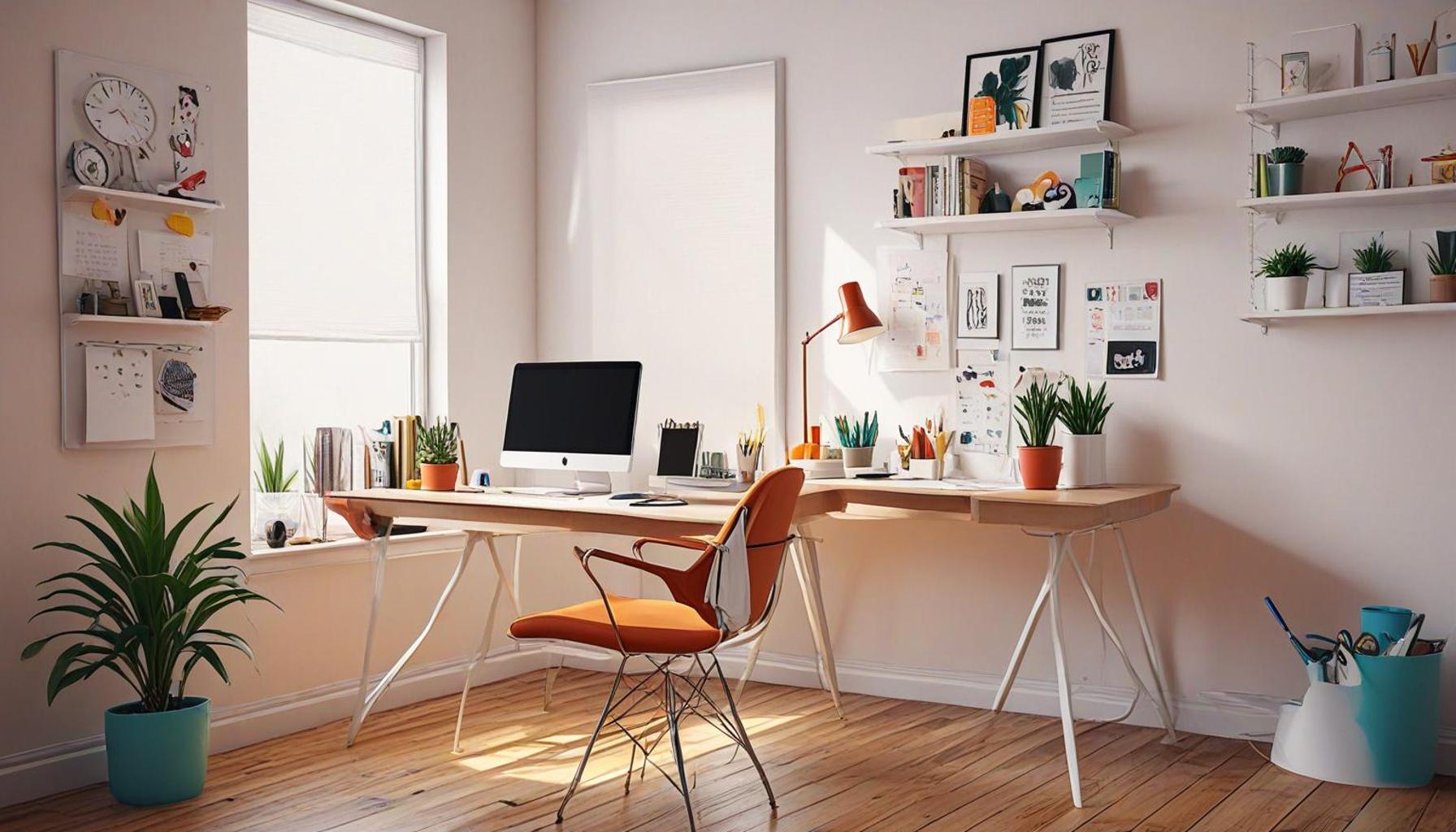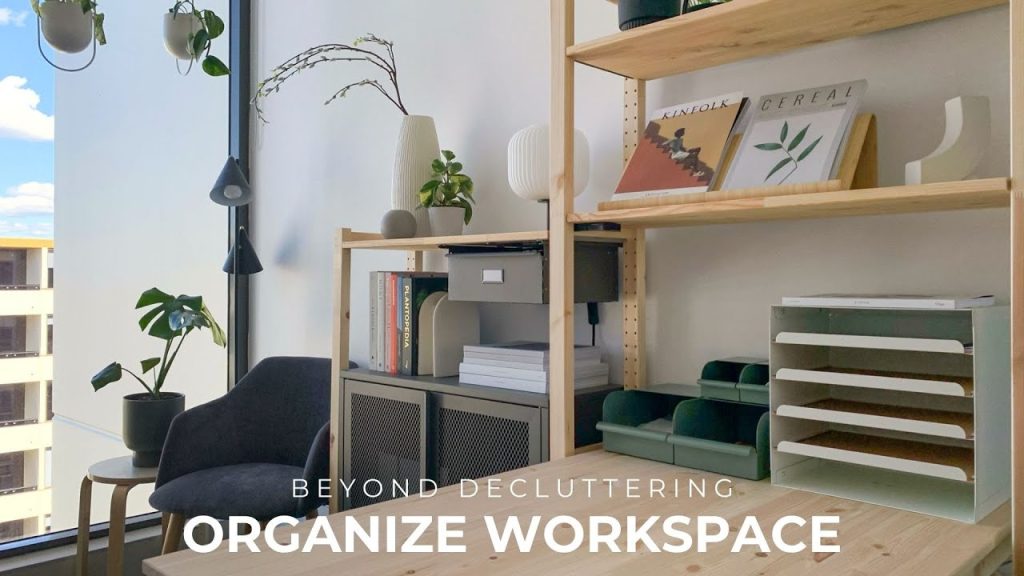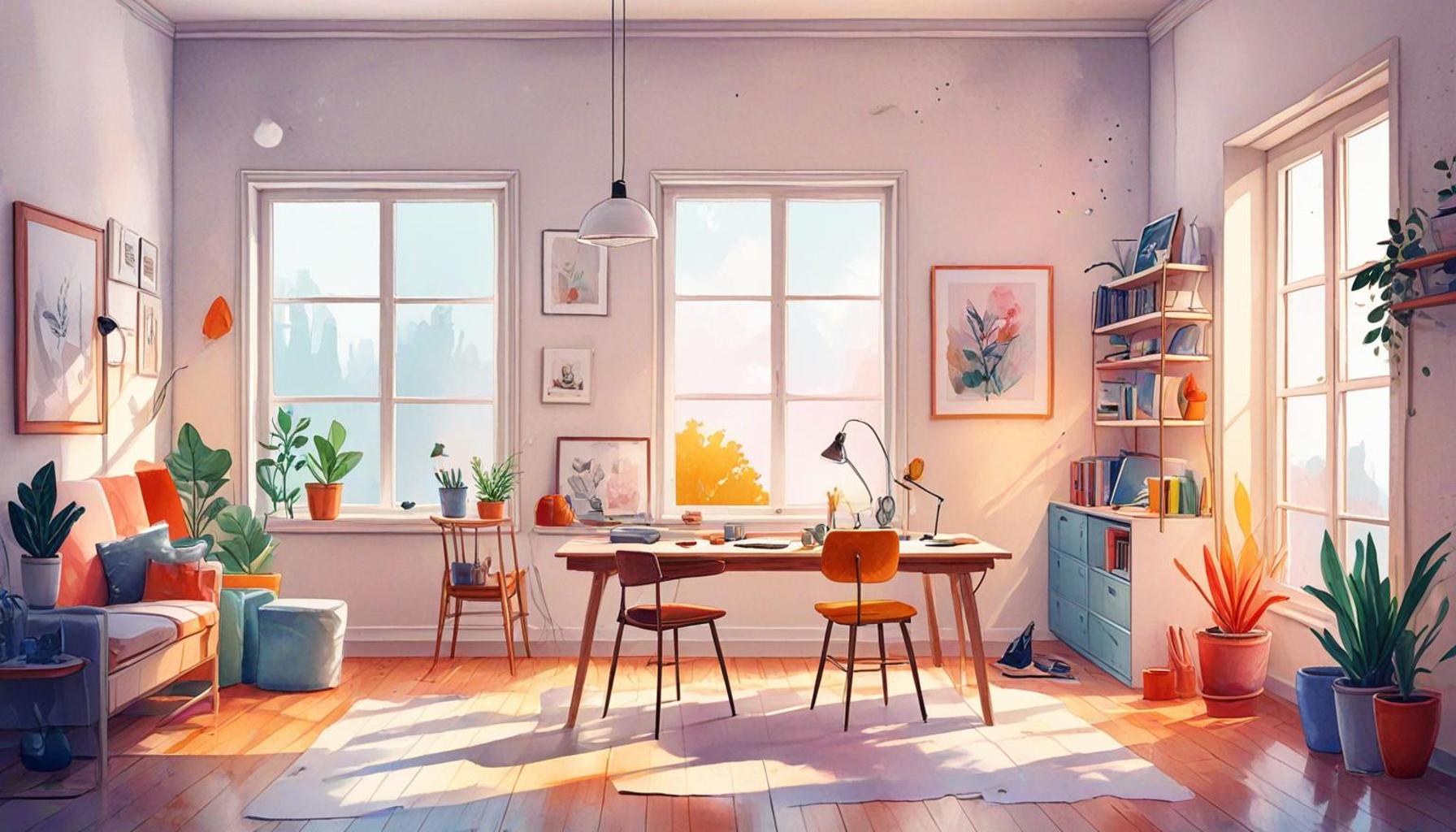Minimalist Workspaces: How to Organize Your Home Office for Maximum Efficiency

Transforming Your Workspace
In an age where distractions abound, creating a minimalist workspace has become essential for achieving maximum efficiency. A clutter-free environment not only enhances productivity but also cultivates a sense of calm, allowing you to focus on what truly matters. Embracing minimalism in your home office can revolutionize your work habits. This transformation is not merely about aesthetics; it represents a shift towards an intentional approach to work and creativity.
Benefits of a Minimalist Workspace
A minimalist workspace contributes significantly to your overall work experience. Here are some key benefits:
- Enhanced focus: Research shows that a cluttered space can lead to increased stress and a decreased ability to concentrate. When your surroundings are stripped down to only the essentials, your mind can better focus on tasks that require creative problem-solving.
- Improved organization: An intentional layout with designated places for all your tools and resources simplifies daily operations. For instance, using drawer organizers or desktop trays can streamline access to supplies, making it easy to find what you need without sifting through piles of clutter.
- Increased creativity: A clear environment fosters creative thinking. Studies have indicated that reducing visual clutter can unlock new levels of innovation, allowing your mind to explore ideas freely without the weight of unnecessary distractions weighing it down.
When setting up a minimalist home office, consider elements that promote efficiency and comfort. Think about incorporating:
- Neutral color schemes to create a serene atmosphere. Colors like soft whites, grays, and beiges can help in fostering a peaceful environment conducive to work, as they tend to reflect light and create an illusion of spaciousness.
- Multi-functional furniture that maximizes space. For instance, a desk that doubles as a storage unit or a shelf that can fold away can help maintain the simple aesthetic while saving valuable space.
- Smart storage solutions that keep essentials at hand without overwhelming the senses. Consider vertical storage options, like shelves and wall-mounted organizers, which free up desk space while keeping items easily accessible.
As remote work continues to rise in popularity across the United States, understanding how to organize your workspace is vital. Studies indicate that 71% of remote workers report feeling more productive in a well-organized home office. By prioritizing simplicity and functionality, you’ll not only enhance your workflow but also create a space that truly reflects your personal style. Additionally, with the right aesthetic, you can inspire your creativity while ensuring that your home office is both a comfortable and efficient workspace. So why not take the plunge? A minimalist workspace may be the key to unlocking your best work yet.
DISCOVER MORE: Click here to learn how to enhance your time management skills

Decluttering for Clarity
The first step in creating a minimalist workspace is to declutter your environment. This process is more than just removing physical items; it involves a careful evaluation of what truly contributes to your efficiency and well-being. Start by emptying your desk, removing everything from your workspace and assessing each item’s functionality and importance in your daily routine.
To make this daunting task manageable, consider the following strategies:
- Set a deadline: Allocate a specific time frame to complete your decluttering. This will prevent procrastination and help you stay focused on the end goal.
- Sort items into categories: Create designated piles for items you want to keep, donate, or throw away. Categorizing will help simplify decision-making and provide a visual blueprint of what remains.
- Apply the “one in, one out” rule: For each new item that enters your workspace, ensure that one item leaves. This rule prevents accumulation and encourages ongoing mindfulness about your possessions.
- Use a digital solution: Don’t forget to declutter your digital space as well. Organizing your files and emails can enhance efficiency just as much as a tidy physical workspace.
Once you have cleared your desk, you will likely notice a newfound sense of clarity and freedom. The act of decluttering will lay the groundwork for a workspace that encourages you to focus on your work rather than getting lost in distractions. With a clean slate, you can now plan your workspace layout to maximize efficiency.
Creating a Functional Layout
The layout of your minimalist workspace plays a crucial role in promoting productivity. Consider how you can arrange your furniture and tools in a way that makes sense for your specific work tasks. Here are some tips to ensure that your office setup is both functional and aesthetically pleasing:
- Position your desk to optimize natural light: Whenever possible, situate your desk near a window to benefit from the calming effects of natural light. Exposure to sunlight can boost mood and energy levels, contributing to increased productivity.
- Keep essential tools within arm’s reach: Place frequently used items such as pens, notebooks, and electronic devices close to your workspace. A tidy desk can enhance focus, but a lack of accessibility can hinder productivity.
- Set up zones for specific tasks: Consider creating distinct areas for different types of work. For example, a designated reading nook or a brainstorming corner with a whiteboard can encourage creative thinking, while your main desk can be used for focused tasks.
By thoughtfully organizing your space, you can create an environment tailored to your workflow. A well-designed layout not only complements your minimalist aesthetic but also invites a sense of order and purpose into your daily tasks.
| Aspect | Impact on Efficiency |
|---|---|
| Clutter Reduction | A minimalist workspace frees up mental space, allowing for improved focus. |
| Natural Light | Incorporating natural light boosts mood and productivity. |
| Functional Furniture | Ergonomic and multi-functional furniture enhances comfort and efficiency. |
| Color Scheme | Using specific colors can influence productivity levels significantly. |
In creating a minimalist workspace, the objective is to streamline both your physical environment and mental focus. The first step is to prioritize clutter reduction, which involves getting rid of unnecessary items. A workspace free from distractions helps maintain concentration and promotes a tranquil working atmosphere. Moreover, the inclusion of natural light is essential in any home office setup. Studies have shown that exposure to sunlight can enhance well-being, invigorating your workspace and subsequently leading to higher productivity. Furniture choices also play a pivotal role in maintaining a minimalist design. Opting for functional and ergonomic furniture not only maximizes space but also ensures that your office remains comfortable, allowing for extended periods of work without strain.Finally, pay attention to your color scheme; different colors can evoke various responses, either energizing your mood or offering calmness. In this way, your office not only becomes a tool for work but a design that elevates your overall efficiency.
DISCOVER MORE: Click here to enhance your time management skills
Incorporating Minimalist Design Principles
Once you’ve decluttered your workspace and created a functional layout, the next step in establishing a minimalist workspace is to incorporate design principles that align with a minimalist aesthetic. The goal is to craft an environment that not only looks visually pleasing but also enhances your productivity and well-being. Here are a few design concepts to consider:
- Choose a neutral color palette: Select calming colors such as whites, grays, and soft pastels that promote a sense of tranquility. Research shows that a neutral backdrop can reduce visual noise and help you feel less distracted. Paint your walls in light colors and choose furniture that complements this palette for a cohesive look.
- Opt for multifunctional furniture: In a minimalist workspace, every piece of furniture should serve a purpose. Consider a desk with built-in storage or foldable chairs that can be tucked away when not in use. This maximizes space and minimizes clutter, making it easier to maintain an organized environment.
- Limit decorative items: While it’s essential to personalize your workspace, keep decorative items to a minimum. A couple of carefully selected pieces, such as a framed photo or an indoor plant, can add character without overwhelming the space. Plants, in particular, not only improve air quality but can also boost creativity and reduce stress, making them an excellent addition to your office.
Overall, integrating minimalist design principles can significantly enhance the ambiance of your workspace, allowing you to feel more comfortable as you work. With a focus on simplicity and functionality, you are more likely to experience increased focus and motivation.
Leveraging Technology for Efficiency
In today’s digital age, technology can be a powerful ally in achieving a minimalist workspace. Streamlining your tech setup helps eliminate unnecessary physical clutter while enhancing your productivity. Here are some effective ways to leverage technology:
- Utilize cloud storage: Embrace cloud-based solutions such as Google Drive or Dropbox for storing documents and files. This reduces the need for physical paperwork and ensures that your important data is accessible from anywhere, supporting a mobile lifestyle.
- Incorporate smart devices: Consider investing in smart speakers or virtual assistants like Amazon Echo or Google Nest. These devices can help you stay organized by setting reminders, managing your schedule, and even controlling lighting in your workspace, all while minimizing physical distractions.
- Automate repetitive tasks: Use project management tools like Trello or Asana to streamline workflows and automate routine tasks. This minimizes mental clutter by helping you manage your time and prioritize tasks efficiently, leaving more room for creativity and innovative thought.
The integration of technology into your minimalist workspace promotes efficiency, enabling you to focus on what truly matters—your work. By reducing digital distractions and leveraging organizational tools, you can create an environment that nurtures productivity.
Establishing Routines and Mindfulness Practices
Finally, implementing daily routines and mindfulness practices can profoundly impact the effectiveness of your minimalist workspace. A structured approach to your workday cultivates discipline and focus. Here are some practices to consider:
- Set specific work hours: Establish a clear boundary between work and personal life. By defining working hours, you can eliminate distractions and create a sense of urgency to complete tasks, promoting efficient use of your time.
- Take regular breaks: Implement techniques such as the Pomodoro Technique, which encourages short breaks after intervals of concentrated work. Research shows this can enhance productivity by preventing burnout and maintaining focus.
- Practice mindfulness: Incorporate brief periods of meditation or deep-breathing exercises into your work routine. Mindfulness has been shown to improve cognitive function and overall well-being, leaving you more energized and focused throughout the day.
By establishing these routines, you ensure that your minimalist workspace becomes a hub for creativity and efficiency, helping you to maximize output and maintain a healthy work-life balance.
DISCOVER MORE: Click here to enhance your productivity
Conclusion
Creating a minimalist workspace is not just about aesthetics; it’s a strategic approach to enhancing productivity and well-being in our increasingly busy lives. By decluttering and streamlining your home office, you can reduce distractions, foster creativity, and encourage focused work. Implementing design principles that emphasize simplicity—such as a neutral color palette, multifunctional furniture, and minimal decoration—can create a calming environment conducive to efficient workflow.
Furthermore, leveraging technology through cloud storage, smart devices, and automation tools eliminates physical clutter and enhances your capability to manage tasks efficiently. Integrating these tools into your workspace empowers you to maintain organization without crowding your environment.
Finally, establishing routines and incorporating mindfulness practices into your daily work schedule can significantly bolster your focus. Setting designated work hours, taking regular breaks, and practicing mindfulness are proven strategies that not only enhance productivity but also promote overall mental health.
Embracing a minimalist approach to your workspace is a transformative process that encourages a healthier work-life balance, allowing you to concentrate on what truly matters—your work. As you implement these strategies in your home office, you’ll likely discover a more productive and enjoyable work environment, setting the stage for success in your professional endeavors. In today’s fast-paced world, a minimalist workspace could very well be the key to unlocking your maximum efficiency.



